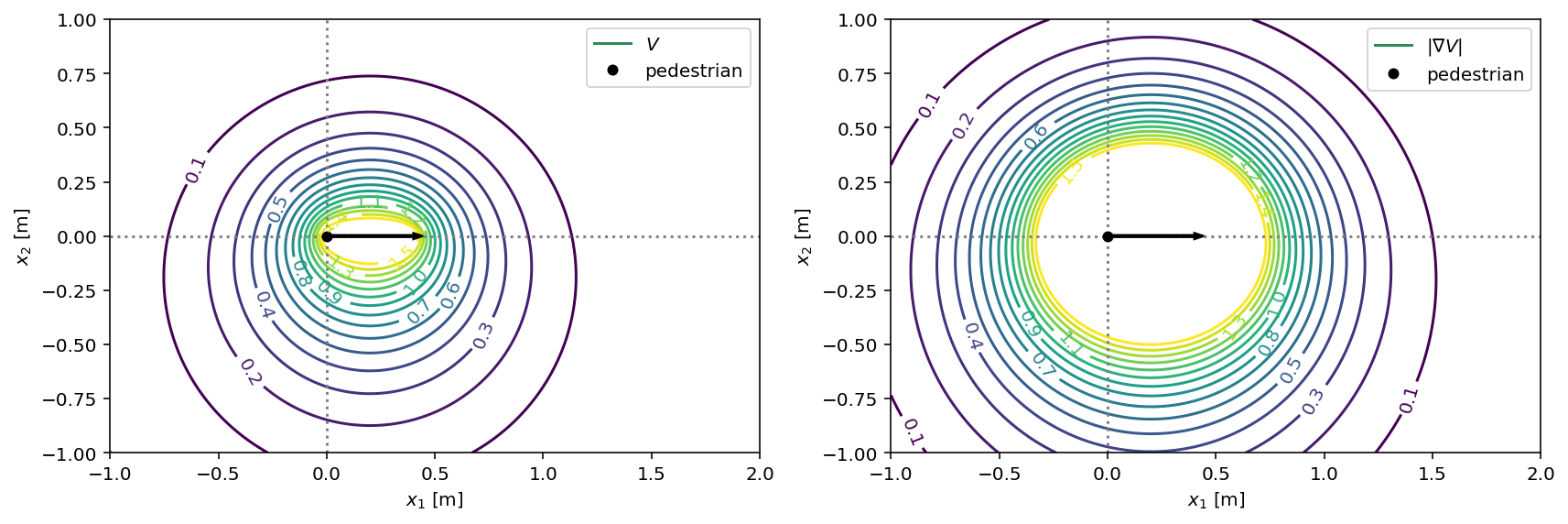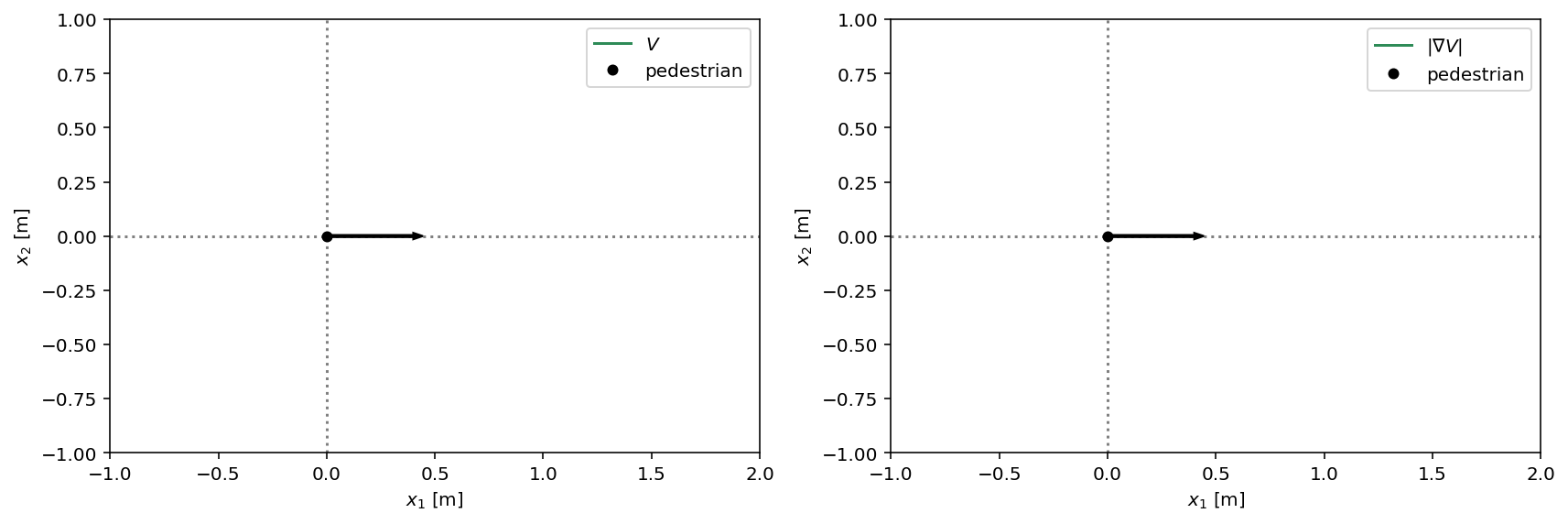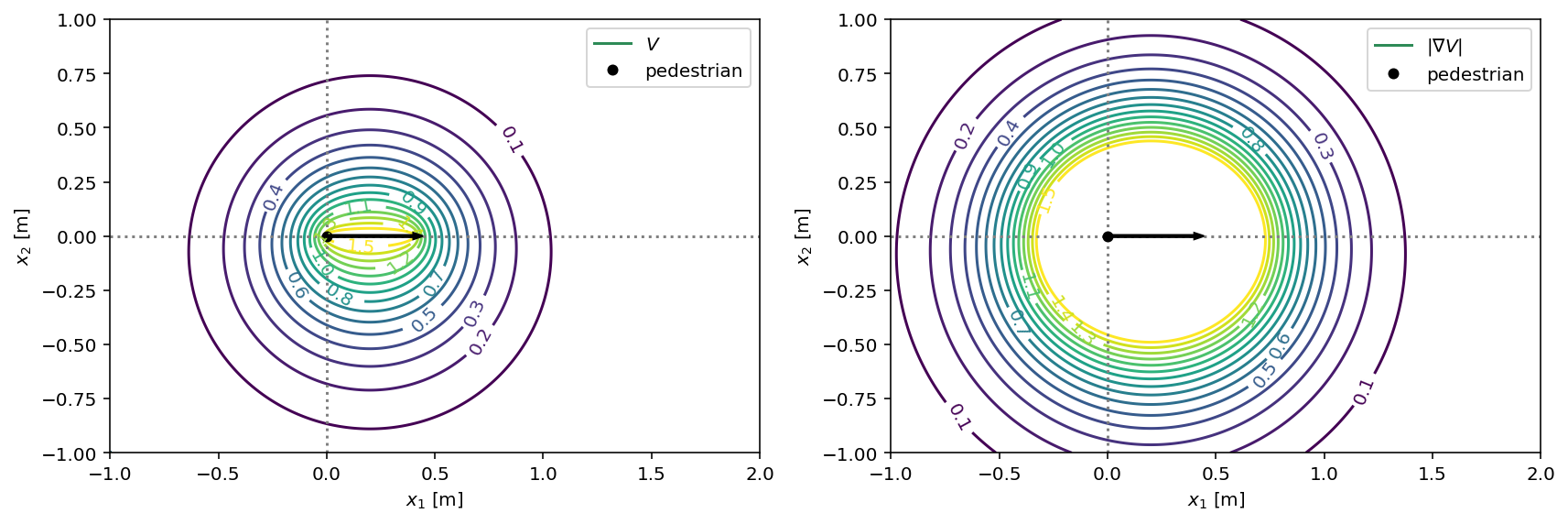1+1D¶
Parametric¶
The potential \(V(b, d_{\perp})\) is approximated by two 1D potentials:
(7)¶\[\begin{align}
V(b, d_{\perp}) &= \textrm{SF}(b) \cdot \max(0, 1 + a d_{\perp})
\end{align}\]
where \(a\) is the asymmetry parameter of the PedPedPotential2D constructor.
V = socialforce.potentials.PedPedPotential2D(asymmetry=-1.0)
with socialforce.show.canvas(figsize=(12, 6), ncols=2) as (ax1, ax2):
socialforce.show.potential_2d(V, ax1)
socialforce.show.potential_2d_grad(V, ax2)

Scenarios¶
Here we use a combination of synthetic Circle and ParallelOvertake scenarios.
circle = socialforce.scenarios.Circle(ped_ped=V)
parallel = socialforce.scenarios.ParallelOvertake(ped_ped=V)
scenarios = circle.generate(5) + parallel.generate(5)
true_experience = socialforce.Trainer.scenes_to_experience(scenarios)
MLP¶
Next we create a model for pedestrian-pedestrian interaction that is the product of two 1D potentials: one potential as a function of \(b\) and another as a function of perpendicular distance. The potential is initialized to random weights and biases.
(8)¶\[\begin{align}
V(b, d_{\perp}) &= \textrm{MLP}_b(b) \cdot \textrm{MLP}_{\perp}(d_{\perp}) \;\;\; .
\end{align}\]
V = socialforce.potentials.PedPedPotentialMLP1p1D()
with socialforce.show.canvas(figsize=(12, 6), ncols=2) as (ax1, ax2):
socialforce.show.potential_2d(V, ax1)
socialforce.show.potential_2d_grad(V, ax2)
/home/runner/work/socialforce/socialforce/socialforce/show.py:216: UserWarning: No contour levels were found within the data range.
ax.contour(x1, x2, values.T,

Inference¶
Next, we use the standard SGD optimizer from PyTorch and train the ped-ped interaction model on the synthetic data created above.
simulator = socialforce.Simulator(ped_ped=V)
opt = torch.optim.SGD(V.parameters(), lr=1.0)
socialforce.Trainer(simulator, opt).loop(20, true_experience, log_interval=5)
epoch 5: 0.009463956018033274
epoch 10: 0.004447306022270555
epoch 15: 0.002459246483607892
epoch 20: 0.0021814398046177195
with socialforce.show.canvas(figsize=(12, 6), ncols=2) as (ax1, ax2):
socialforce.show.potential_2d(V, ax1)
socialforce.show.potential_2d_grad(V, ax2)

